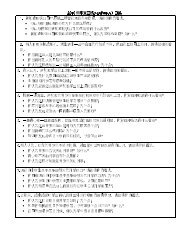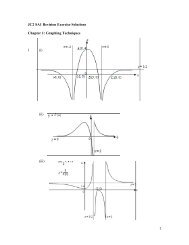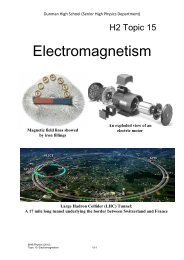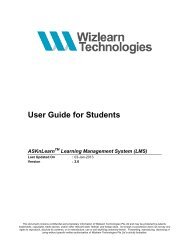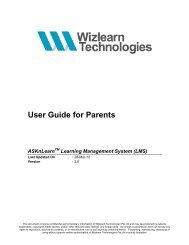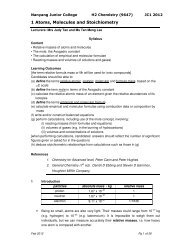Suggested Answers of BT2 Revision Package - ASKnLearn
Suggested Answers of BT2 Revision Package - ASKnLearn
Suggested Answers of BT2 Revision Package - ASKnLearn
- No tags were found...
You also want an ePaper? Increase the reach of your titles
YUMPU automatically turns print PDFs into web optimized ePapers that Google loves.
ising making labour relatively more expensive than capital, coupled withincreasingly well-trained and well-educated labour force and rapid capitalaccumulation, the economy is pushed towards becoming a major exporter<strong>of</strong> electronics and information technology products. The pull factor would behigher value-add and hence returns associated with more capital-intensiveproduction.1 mark for meaning <strong>of</strong> comparative advantage1 mark for linking comparative advantage to exportsFinal 2 marks for applying to the case <strong>of</strong> China here.(c) Assess the impact <strong>of</strong> China’s growth on ASEAN economies. [6]China’s growth has both positive and negative impact on ASEANeconomies as raised in Extract 5.China’s growth is likely to bring economic prosperity to ASEANeconomies. China’s rising demand for exports from ASEAN economiescould help stimulate the economies with rising employment and promoteeconomic growth in the long run. This is further supported by the foreignexchange earnings through exports which allow ASEAN to importrelevant capital goods for economic development and growth.However, with a comparative advantage mainly in its cheap labour andvast land, more than half <strong>of</strong> China’s exports come from the processingand assembly <strong>of</strong> imported parts and components. This has driven upmany key commodities prices and created worrying inflationarypressures world-wide. While ASEAN members who are net importers <strong>of</strong>key inputs such as Brunei in oil and Malaysia and Indonesia in palm oilbenefit, others face risk <strong>of</strong> stagflation.China started <strong>of</strong>f as a major competitor for foreign direct investment withmany ASEAN members and it has clearly outperformed ASEAN with itsabundant labour and land, to the detriment <strong>of</strong> ASEAN’s economicdevelopment plan. However, China in recent years, especially with itsvast foreign reserves, has started looking outwards including ASEAN toinvest which would help promote ASEAN’s economic growth.Notwithstanding many concerns over the fast rising China economy,international trade based on true comparative advantage should not bea zero sum game. E.g. Singapore though experienced loss <strong>of</strong>comparative advantage to China in labour-intensive productions hasbeen successful in exporting its expertise and services to China. WhileChina may appear to benefit more given its faster economic growth,availability <strong>of</strong> the relatively low cost products from China has also gonea long way to help lift ASEAN’s living standard and raise its productivecapacity. A more pressing issue, perhaps, would be on China






